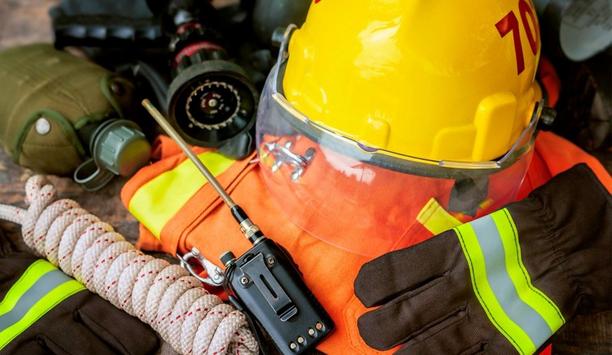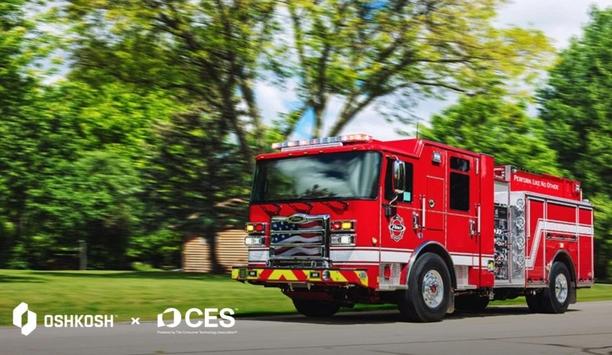The fire safety landscape has experienced significant change in recent years. Some high-profile incidents, including those in Catford and Dagenham, highlight the critical importance of using fire-resistant materials and implementing enhanced safety measures for both residential and commercial structures.
These tragic incidents have prompted the construction industry to rethink how it designs and builds safe spaces for people to live and work in. In fact, the latest revision to the Fire Safety Standard (BS 9991) introduced several important changes to improve regulation. Among them, broadening the scope to include residential care homes, bringing fire door classifications up to European standards, and improved provisions for tall buildings when it comes to smoke control and evacuation lifts.
Latest progress to improve fire safety
A key aspect of the evolving Fire Safety Standard, and among the most critical, has been the widespread adoption of non-combustible materials in construction. The choice of materials has become a key focus in modern construction projects.
In this article, the Copper Sustainability Partnership (CuSP) explores the latest progress to improve fire safety in buildings and how copper positions itself as the gold standard for the built environment.
How are non-combustible materials used in construction?
The 2024 revision to the regulation limits the restriction on combustible material use to external walls
Non-combustible materials, by definition, do not burn or support the spread of fire. They, therefore, play a key role in reducing the risk of fire ignition and slowing its spread throughout a building, minimizing the potential for injury or loss of life and reducing the overall damage to the structure.
The 2024 revision to the regulation limits the restriction on combustible material use to external walls, ancillary areas, and kitchens. However, a critical risk remains in the use of plastic piping for heating and plumbing, due to its combustibility and potential to release toxic fumes. To address this, regulation must evolve and recognize copper and other metals for their superior fire resistance, if a safer future is to be created for internal building systems.
The fire consultation forum
In response to growing concerns about fire risks, the Fire Sector Federation (FSF) recently launched its fire consultation forum, which aims to enhance communication, share knowledge, and foster collaboration among key stakeholders within the fire safety sector.
This initiative brings together a diverse range of groups, including government departments, fire safety professionals, insurance bodies, and the construction industry to ensure a more coordinated approach to fire-related regulations.
How fire safety information is shared?
It mandates the registration of high-risk buildings and clarifies the roles of accountable persons
The forum aims to ensure the implementation of the Building Safety Act 2022, a crucial piece of legislation aimed at improving safety, accountability, and compliance within the construction sector. It mandates the registration of high-risk buildings and clarifies the roles of accountable persons. By systematizing fire safety measures across the industry, the act strengthens long-term resilience and accountability, helping to create safer built environments.
The goal is simple but vital: to create safer, more resilient buildings by improving how fire safety information is shared, and policies are developed. As part of this shift, the materials used in construction have come under greater scrutiny.
Are modular homes fire-safe?
With developers under pressure to meet government housebuilding targets, modern methods of construction, such as modular homes, offer a quick and efficient solution and have become popular in the industry. They are prefabricated off-site and then assembled on location, making them an attractive option for meeting urgent housing demand. However, their fire safety is just as important as their quick installation – especially with high-rise buildings.
With modular homes on the rise, recent Research by Harlow Consulting and Edinburgh Napier University, published by the Ministry of Housing, has highlighted fire safety concerns with volumetric modular construction.
Standard fire testing methodology
There is no definitive evidence on whether fires are more likely in modular buildings
The report notes the lack of a standard fire testing methodology for these buildings – while there is no definitive evidence on whether fires are more likely in modular buildings, the use of combustible materials in voids could lead to more severe consequences if fire and smoke spread quickly, unless mitigated by proper design and installation.
It's essential to evaluate whether modular homes are equipped with fire-resistant features that can prevent the rapid spread of fire and protect residents in the event of an emergency.
What is the part of plumbing in enhancing building fire safety?
Particularly in high-rise buildings and residential complexes, fire-resistant materials like non-combustible cladding, piping, and insulation are critical in developing buildings that can withstand fire and contain it within a limited area. Among the most overlooked elements in fire safety are the systems used within buildings, such as plumbing. More recently, plastic pipes have become a common choice for plumbing – however, the flammability of plastic materials is a major cause for concern.
Many plastics, including polyvinyl chloride, polyethylene, and multi-layer composite pipes burn quickly when exposed to fire and can release toxic fumes that fuel the blaze and pose risks to human health. These plastics not only catch fire quickly but melt and drip, exacerbating the spread of fire. This is where copper comes in as a vital material for improving fire safety.
Fast and reliable evacuation
Copper is a non-combustible material that can help prevent the spread of fire in critical areas
Copper is a non-combustible material that can help prevent the spread of fire in critical areas like plumbing systems. The metal has a high melting point of 1,085°C - far exceeding the temperature of most building fires – and does not catch fire easily or release harmful gases when exposed to high heat.
Additionally, copper pipes have a low thermal expansion coefficient, meaning they expand at a slower rate than most other building materials when exposed to heat. This makes copper particularly valuable in fire situations, as it retains its structural integrity for longer, helping to prevent further damage or catastrophic failure. The properties of copper make it a vital component of fire safety, particularly in modern buildings, where fast and reliable evacuation is key to saving lives.
The future of modern construction
As the construction industry faces increasing pressure to meet heightened fire safety standards, the adoption of non-combustible materials such as copper is essential. The importance of these materials cannot be overstated, especially in the context of modular homes. The future of fire safety lies in a holistic approach, one that incorporates regulatory compliance and establishment, with a deeper understanding of the materials and systems that go into creating safe buildings and homes.
By replacing plastic pipes with copper in buildings, installers can significantly reduce the risk of fire spreading through the building’s infrastructure. As fire safety standards evolve, copper has the potential to revolutionize building safety. So, when will it become the standard for plumbing and infrastructure?















